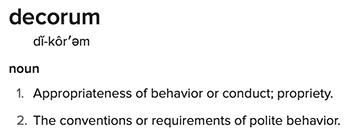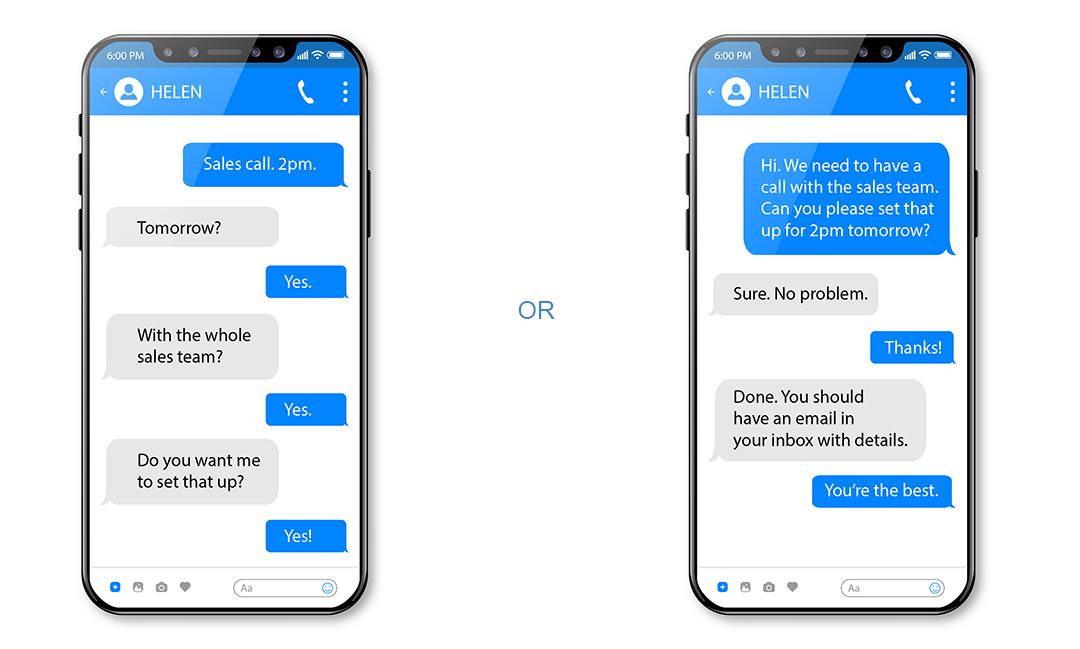How to Communicate Effectively in the Workplace
Good communication strategy is a vital part of doing business and essential to make a great place to work.

A great place to work includes having team members who can communicate with each other and a business that can communicate with its customers. Working together means you have to communicate with each other clearly. Without it, you can’t get a team together. You can’t sell anything to anyone. You won’t be able to deliver services correctly. Your customers will suffer and your business will stall at every available opportunity. Communication is the point at which you either fail or succeed.
According to a McKinsey report, well-connected teams see a productivity increase of 20-25 percent.
Why communication is so important
Simply put, communication is the thing we use to send and receive information (whether verbally or otherwise) so that understanding can occur. You need to make sure that you are understood by the person or group of people you are communicating with. Without communication, you aren’t able to get anything done correctly and if you do by some miracle manage to achieve anything significant, you won’t be able to do it again and again to a high level of quality. If you are providing a service or making something, whether it is a physical object or an event — you need excellent communication.
Not communicating to your team what you aim to achieve together leaves them guessing what you want and need. Set an example of communication at a level commensurate with your station. Be the better person and lead them to greatness. Leading means they understand what you are asking them to achieve and what you are expecting of yourself and the organization.
39 percent of the American workforce feel like there is “little to no room” for productive dialogue within the organization. This means that almost 40 percent of workers feel they can’t speak up and won’t be listened to if they did build up the courage to do so. It is a sad state of affairs. The fact that almost 70 percent of people who have been put in positions of management don’t feel comfortable even communicating with their teams speaks volumes. If you don’t feel like you can talk to your team you will not have an amazing workplace you will be stuck in the mud.
64 percent of businesses list communicating their ‘strategy, values, and purpose’ to employees as a key priority.
It is important to take note of this. Communication with your employees should be a priority if you want an amazing workplace. Statistics show that companies with effective programs for communication and support are 3.5 times more likely to beat out their rivals. On top of that well-informed employees outperformed their peers by 77 percent!
Without good communication, problems arise and productivity suffers. You aren’t on the same page. You aren’t getting through to people and they aren’t getting through to you. Things fall by the wayside. Priorities are missed or ignored. It is impossible to put too much emphasis on the effect of communication between team members. Likewise, the door of communication to managers and higher echelons of the business should be available and accessible when necessary.
A report by Holmes, the voice of the global PR industry, shows that the cost of poor communication has by now hit a whopping $37 billion in total.
A monthly newsletter or even an internal website for employees to keep abreast of news or developments needs to be thought through and implemented correctly. Building trust within your organization is done through communication avenues that need to be created and nurtured. Communication between team members in a great place to work is easy, fast, and understood by their fellows.
Delays are caused if your teams can’t discuss actions and goals together. You can’t expect anything to be delivered in the right time frame without communication that is easy and smooth and with no glitches on the line.
28 percent of employees cite poor communication as the reason for not being able to deliver work on time.
If there are gaps in your team’s communication skill set, you will find that things get clunky fast. Misunderstood instructions or requests cost time and money. Wrong items ordered and delayed projects all happen due to poor communication. (Gartner) Research shows that organizations using internal communications best practices outperform the competition.
Meanings of words
One issue that can arise is that jargon can creep in. Jargon is a kind of short-hand code or abbreviations of terms and industry-specific words that can sometimes be used in businesses and organizations. Acronyms can be misunderstood if they are used frequently in a team. This can help or hinder communication. When a new person joins they will not know what is happening if you use terms they are not familiar with. A new member of the team might not know an acronym or term you use and so mistakes can be made. A misunderstanding can create disaster. It isn’t their fault that they have not been grooved in. However, once everyone is on the same page it speeds things up. 97 percent of workers believe that communication impacts tasks every day.

A study by the Economist Intelligence Unit further illustrates how poor workplace communication can hurt the success of a workplace — it may result in:
- Failure to complete projects — in 44 percent of the cases
- Low employee morale — in 31 percent of the cases
- Missed performance goals — in 25 percent of the cases
- Lost sales — in 18 percent of the cases
Methods of communicating
The way you communicate matters. The difference between a few short terse words or sentences in an email compared to a voice note on WhatsApp is one thing, but societal and interpersonal relationships need to be taken into account. You are not expected to write a long and in-depth missive with flowery language using a quill by candlelight and finishing it off by sealing it in wax and summoning a raven. You are however expected to communicate easily and with respect, class, and decorum. You are the face of the business and the heart of the team if you are a team leader or manager. More than 80 percent of Americans believe employee communication is crucial for developing trust with employers.

While it completely depends on the context of the communication, there is still something to be said for having a sense of decorum when delivering any kind of message having to do with your business. Even if it’s as simple as sending a text message asking to schedule a call. The difference is obvious when you look at the versions below.

How to Communicate Effectively
The main objective of communicating is to get an idea or intention across to another individual or group.
The London speech workshop says that ‘effective’ communication’ is when we go about sharing our ideas in an authentic and engaging way. It has to be authentic and engaging or it won’t effectively reach your target. The third factor is a connection to our listeners or audience. When all three components are present, truly authentic communication is possible. This is known as the Serlin Method™.
The way in which you communicate has consequences. The tone of voice used as well as the actual method of communication has an effect on the way the piece of information is received on the other end. Miscommunication causes havoc on productivity. If people aren’t able to communicate effectively, nothing can get done. The most important point is to make sure you don’t end up confusing your team or staff members. You most certainly don’t want poor communication with your customers or service providers. 86 percent of companies worldwide attribute any company failures to poor communication.
Communication complexity
Knowing the number of people in the project will give you an idea of how many channels of communication will be necessary to achieve success together as a team. The larger the team the more complex the overall communication between each member and the leader becomes. Things can start to get missed or overlooked. People can be left out of the loop on things they need to have a handle on if you aren’t diligent about working out and being fully aware of the internal lines of communication between everyone. Most managers spend much of their day talking to people. One-quarter of a CEO’s time in a working day is spent on phone calls.
Communication complexity is not about one person talking to others, it is about each and every member of the team and how everyone interacts together. It gets more and more complicated the more people you add to the conversation. Threads open up that can unravel everything if you aren’t careful.
Key points to successful communication
Outcome
Without a clear intention behind your communication, you will not be understood on the receiving end and the outcome you want to achieve won’t become a reality. Miscommunication creates confusion. If the piece of information you intend to communicate isn’t then mistakes get made or something goes wrong. Confuse your team and you will be in a lot of trouble.
Ask yourself: What is it that you actually intend by communicating to this person or group? What do you want the outcome to be? Why are you sending it and what do you need to occur once it has been sent? This will dictate the way in which you frame it and what form of technology to use for it.
75 percent of millennials don’t like making or taking phone calls because of its time-consuming nature. An older colleague constantly calling to check in on a younger team member can cause friction and resentment between them even when the best intentions were in place. If you want a response from someone who doesn’t answer their phone leaving them multiple voice mail messages isn’t a good idea either. You will just end up in a long list of missed calls and ignored messages that “take up too much time”. A voice note can be played at a faster speed so isn’t as invasive and there aren’t any social niceties to observe such as asking how you are and discussing the traffic or the weather.
Bear in mind how and where your messages are read. Sending a voice note that could be played on loudspeaker is a bad plan if you are sending any sensitive information or criticism. It is especially important to consider security as well if you have any proprietary information or properties.
If it needs to be marked as a priority then you should consider the fastest way as well as the most effective way to get the message to the folks who need it. If your team is out in a storm fixing cell phone towers or driving then sending a text to a manager on-site won’t cut it. It could endanger the team and people could get hurt.
The intention behind your communication isn’t just what you want to say but the way that you say it. Consider this: What is the message you’d like them to receive, and how would you like it to be received? Reread or listen to your message before sending and think about it from their point of view. Imagine that you are the recipient. Is your message clear, concise, polite and understandable?
Typing all in CAPITAL LETTERS TO SHOW URGENCY can be construed as yelling. Written communication can be a balancing act on a proverbial tightrope, but you need to balance it correctly to get the most out of your team and yourself. Speak with authenticity and pure intention and the results will speak for themselves. An amazing workplace is a great place to work when people are connected and can communicate clearly and effectively.
Focus
Without focus, you will not get anywhere when you are communicating. Focus and attention are necessary from both sides for a conversation to occur and for any real understanding to take place. You both need to engage in the process or the process breaks down. Focus means you have to pay attention when you are composing your messages. You also want the recipient’s full attention on that message that was sent. This in turn means you need to think about a lot of things.
The main thing you need to achieve is for the other side of the conversation to receive and understand anything you send or say. If necessary, you may or may not need a response. To achieve that you need the other party to give your message the attention you require. Sending them a message can be done in many ways so choosing the right way to communicate is the first step in your attention phase. Over 306 billion emails are sent and received worldwide each day. However, a meager amount of them is opened at all. Close to a third of emails in North America are actually opened — which means that almost two-thirds are never seen. Half of all emails that are opened are done so on a mobile device. Be aware that if you are including graphics or important video links, some folks won’t get the full impact of what you are sending. You may need them to watch it on a screen that is larger than a phone so be clear about what you send and how you do so.
The fact is that in this connected age, while it seems like we are more connected than ever before, but there is a flip side to that coin. We don’t give things the same amount of attention and time we used to. We used to take time to read an email because it was on a desktop. Once laptops and wireless took over we were more connected and mobile, but you still had to open your computer and read something that came into your inbox. Nowadays we have our devices in our hands or pocket or handbag. Your phone is on and sending and receiving data all the time.
42 percent of Americans check their business emails while in the restroom, and 18 percent do so while driving!

The subject of your message is the next step to think about. What is it going to contain and what do you really need to say to the person or group you are communicating with. If you need their focus it could be advisable to follow up with a call or schedule a call to go over any pertinent data that needs to be addressed. If you need a call to action include it in the message. For instance, if a form needs to be filled out and returned make sure you include simple instructions for how to use it and what way you need them to return it. If it needs to be uploaded to a dropbox or team sharing software system, make certain they know the deadline if there is one and any supporting information that may help.
Don’t bombard anyone with multiple emails or they will resent your communications and the chance of them opening any in the future will be compromised. Almost half of all workers feel receiving fewer emails at work would increase their job satisfaction. This makes sense when statistics show that 26 percent of employees view email as a serious productivity killer. Internal messaging or team software is a better way to deal with a team than an email thread. No matter what happens communication between your team members in your organization needs to be something you can rely on rather than worry about.
When you think about it, communication in its simplest form is the action of sending a message containing an idea from one point to another, with that same idea being understood at the receiving end. And then some kind of acknowledgement sent back, signifying that it was received. When you interrupt this natural flow of communication by sending a flood of emails, the likely result will be that the person or persons at the receiving end will feel unhappy about it.

Being a great communicator results in a great place to work. The seeds are planted with every authentic connection you make. Ultimately it is also the way the team members communicate between each other and the public or your customers that also shows the effectiveness of your strategy. Keeping an eye on the multiple threads of messaging and chats that go on in business today may seem impossible. However, if you focus your attention and keep authenticity at your core you will experience an amazing workplace faster than you expected.